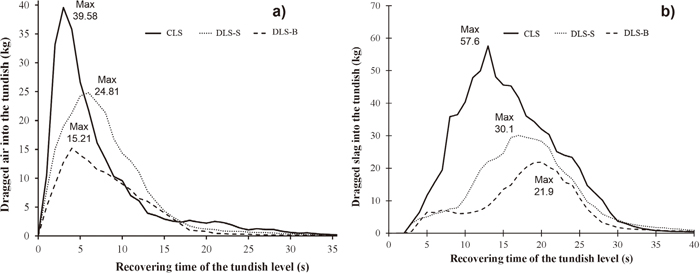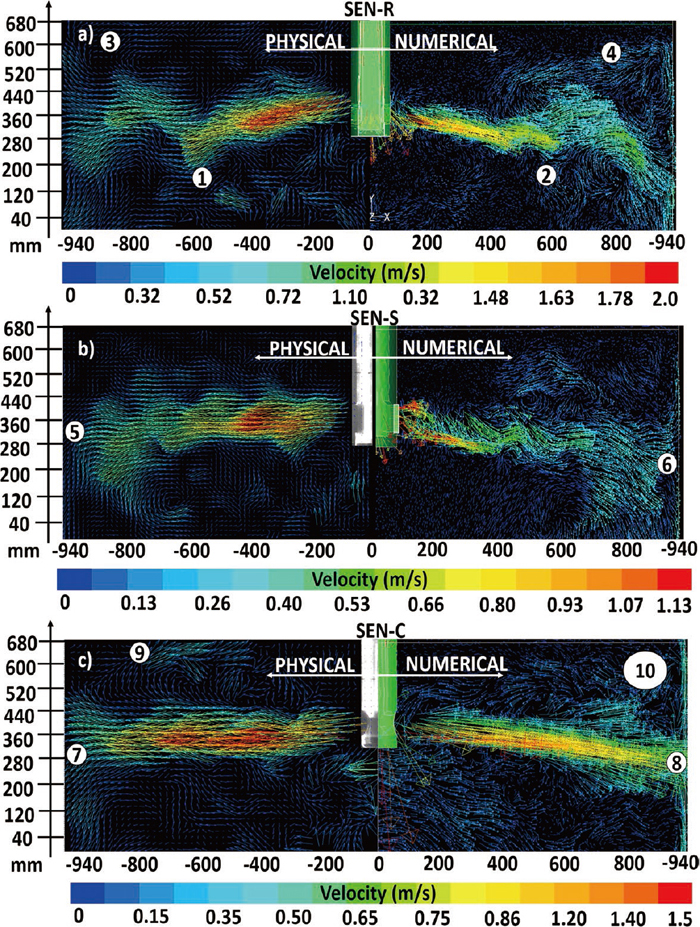Volume 59, Issue 1
Displaying 1-30 of 30 articles from this issue
- |<
- <
- 1
- >
- >|
Publication Data
-
2019 Volume 59 Issue 1 Pages Cover-
Published: January 15, 2019
Released on J-STAGE: January 17, 2019
Download PDF (431K) -
2019 Volume 59 Issue 1 Pages Editorial-
Published: January 15, 2019
Released on J-STAGE: January 17, 2019
Download PDF (662K) -
2019 Volume 59 Issue 1 Pages Contents-
Published: January 15, 2019
Released on J-STAGE: January 17, 2019
Download PDF (525K)
Regular Articles
Fundamentals of High Temperature Processes
-
Article type: Regular Article
2019 Volume 59 Issue 1 Pages 1-8
Published: January 15, 2019
Released on J-STAGE: January 17, 2019
Advance online publication: September 22, 2018Download PDF (1208K) Full view HTML -
Article type: Regular Article
2019 Volume 59 Issue 1 Pages 9-15
Published: January 15, 2019
Released on J-STAGE: January 17, 2019
Download PDF (1075K) Full view HTML
Ironmaking
-
Article type: Regular Article
2019 Volume 59 Issue 1 Pages 16-21
Published: January 15, 2019
Released on J-STAGE: January 17, 2019
Download PDF (1782K) Full view HTML -
Article type: Regular Article
2019 Volume 59 Issue 1 Pages 22-30
Published: January 15, 2019
Released on J-STAGE: January 17, 2019
Advance online publication: November 02, 2018Download PDF (1852K) Full view HTML -
Article type: Regular Article
2019 Volume 59 Issue 1 Pages 31-38
Published: January 15, 2019
Released on J-STAGE: January 17, 2019
Download PDF (1124K) Full view HTML -
Article type: Regular Article
2019 Volume 59 Issue 1 Pages 39-45
Published: January 15, 2019
Released on J-STAGE: January 17, 2019
Advance online publication: September 30, 2018Download PDF (911K) Full view HTML
Steelmaking
-
Article type: Regular Article
2019 Volume 59 Issue 1 Pages 46-50
Published: January 15, 2019
Released on J-STAGE: January 17, 2019
Download PDF (437K) Full view HTML -
Article type: Regular Article
2019 Volume 59 Issue 1 Pages 51-59
Published: January 15, 2019
Released on J-STAGE: January 17, 2019
Advance online publication: October 25, 2018Download PDF (3145K) Full view HTML
Casting and Solidification
-
Article type: Regular Article
2019 Volume 59 Issue 1 Pages 60-68
Published: January 15, 2019
Released on J-STAGE: January 17, 2019
Download PDF (3302K) Full view HTML -
Article type: Regular Article
2019 Volume 59 Issue 1 Pages 69-75
Published: January 15, 2019
Released on J-STAGE: January 17, 2019
Advance online publication: October 27, 2018Download PDF (1352K) Full view HTML -
Modeling Study of Turbulent Flow in a Continuous Casting Slab Mold Comparing Three Ports SEN DesignsArticle type: Regular Article
2019 Volume 59 Issue 1 Pages 76-85
Published: January 15, 2019
Released on J-STAGE: January 17, 2019
Download PDF (2929K) Full view HTML -
Article type: Regular Article
2019 Volume 59 Issue 1 Pages 86-92
Published: January 15, 2019
Released on J-STAGE: January 17, 2019
Download PDF (1287K) Full view HTML
Instrumentation, Control and System Engineering
-
Article type: Regular Article
2019 Volume 59 Issue 1 Pages 93-97
Published: January 15, 2019
Released on J-STAGE: January 17, 2019
Advance online publication: November 06, 2018Download PDF (814K) Full view HTML -
Article type: Regular Article
2019 Volume 59 Issue 1 Pages 98-103
Published: January 15, 2019
Released on J-STAGE: January 17, 2019
Advance online publication: October 19, 2018Download PDF (815K) Full view HTML
Chemical and Physical Analysis
-
Article type: Regular Article
2019 Volume 59 Issue 1 Pages 104-112
Published: January 15, 2019
Released on J-STAGE: January 17, 2019
Download PDF (2542K) Full view HTML
Forming Processing and Thermomechanical Treatment
-
Article type: Regular Article
2019 Volume 59 Issue 1 Pages 113-121
Published: January 15, 2019
Released on J-STAGE: January 17, 2019
Download PDF (1944K) Full view HTML
Welding and Joining
-
Article type: Regular Article
2019 Volume 59 Issue 1 Pages 122-128
Published: January 15, 2019
Released on J-STAGE: January 17, 2019
Download PDF (827K) Full view HTML -
Article type: Regular Article
2019 Volume 59 Issue 1 Pages 129-135
Published: January 15, 2019
Released on J-STAGE: January 17, 2019
Download PDF (760K) Full view HTML -
Article type: Regular Article
2019 Volume 59 Issue 1 Pages 136-143
Published: January 15, 2019
Released on J-STAGE: January 17, 2019
Advance online publication: October 20, 2018Download PDF (1980K) Full view HTML
Surface Treatment and Corrosion
-
Article type: Regular Article
2019 Volume 59 Issue 1 Pages 144-151
Published: January 15, 2019
Released on J-STAGE: January 17, 2019
Download PDF (3296K) Full view HTML -
Article type: Regular Article
2019 Volume 59 Issue 1 Pages 152-160
Published: January 15, 2019
Released on J-STAGE: January 17, 2019
Advance online publication: November 06, 2018Download PDF (1661K) Full view HTML
Transformations and Microstructures
-
Article type: Regular Article
2019 Volume 59 Issue 1 Pages 161-168
Published: January 15, 2019
Released on J-STAGE: January 17, 2019
Download PDF (1772K) Full view HTML -
Article type: Regular Article
2019 Volume 59 Issue 1 Pages 169-175
Published: January 15, 2019
Released on J-STAGE: January 17, 2019
Advance online publication: October 24, 2018Download PDF (884K) Full view HTML
Mechanical Properties
-
Article type: Regular Article
2019 Volume 59 Issue 1 Pages 176-185
Published: January 15, 2019
Released on J-STAGE: January 17, 2019
Download PDF (2942K) Full view HTML -
Article type: Regular Article
2019 Volume 59 Issue 1 Pages 186-191
Published: January 15, 2019
Released on J-STAGE: January 17, 2019
Download PDF (1375K) Full view HTML
Physical Properties
-
Article type: Regular Article
2019 Volume 59 Issue 1 Pages 192-200
Published: January 15, 2019
Released on J-STAGE: January 17, 2019
Download PDF (1989K) Full view HTML
Social and Environmental Engineering
-
Article type: Regular Article
2019 Volume 59 Issue 1 Pages 201-207
Published: January 15, 2019
Released on J-STAGE: January 17, 2019
Download PDF (1196K) Full view HTML
- |<
- <
- 1
- >
- >|


 . The complex O–Ti–O deformation units are depolymerized into the simple structural units (
. The complex O–Ti–O deformation units are depolymerized into the simple structural units ( monomers,
monomers,  chains and Ti–O stretching vibrations in 6-coordinated Ti4+) and the [AlO4]- tetrahedrons are simplified to the [AlO6]- octahedrons. In addition, the relative amounts of low melting point complicated pyroxene in the pre-melted slag increase, improving the meltability of slag and decreasing the break point temperature.
chains and Ti–O stretching vibrations in 6-coordinated Ti4+) and the [AlO4]- tetrahedrons are simplified to the [AlO6]- octahedrons. In addition, the relative amounts of low melting point complicated pyroxene in the pre-melted slag increase, improving the meltability of slag and decreasing the break point temperature.

